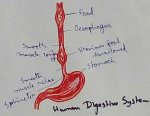Roots and its Functions
In plants life how roots and its functions are the important part of a plant.
The part of the plant that grows underground is called the root. Roots grow deep into the ground. They also spread wide, across the ground. Pull out some grass and compare its roots with the roots of the balsam plant. We can see that the roots are different. The bigger the tree, the deeper and more spread out are its roots. Different plants have different types of roots. Some plants have tap roots while others have fibrous roots.
Tap roots
A tap root has a main thick root. Tap root grows at the end of the stem which goes deep inside the soil. Out of the main root grow a number of thin roots.
Plants like neem, mango, carrot, mustard, bean and balsam have tap roots.
Fibrous roots
Fibrous roots have no main root. A number of roots that grow at the end of a stem are called fibrous roots. The roots of the plant go down deep in to the Earth and spread out. They hold the plant firmly in the soil. It helps the plants to stand up firmly even when a strong wind blows.
Plants like rice, wheat and onion have fibrous roots.
Functions of the root
No plant can live or grow without roots. Hence, roots are very important.
(i) A root holds a plant erect and in one place.
(ii) Roots hold a plant firmly to the soil.
(iii) Roots absorb water and minerals from the soil and pass them to the plant.
(iv) Some roots store food for the plant.
Roots of plants like carrot, turnip, radish and beetroot store food. These can be eaten.
Now, we know how roots and its functions are the basic part of a plant.
Flowers, Fruits and SeedsFrom Roots and its Functions to HOME PAGE
Recent Articles
-
Eleventh Grade | Eleventh Grade Science | Eleventh Grade Math
Jun 27, 25 12:26 AM
Eleventh grade biology has been designed in accordance with the recommended topics. We will cover all the topics in biology very exciting and interesting way. -
Explain Digestion of Food | Salivary Glands | Oesophagus | Stomach
Jun 27, 25 12:20 AM
Before the digestion is start by the different enzymes secreted from the different digestive glands food must be turned and chut or mixed with saliva inside the mouth. -
Explain Human Digestive System | Mouth | Tongue | Pharynx | Teeth
Jun 21, 25 01:15 PM
Digestive system is a system of alimentary canal and digestive glands. Alimentary canal- alimentary canal is a tube of variable diameter having muscular wall and glandular epithelial tissues which sta… -
Vernalisation in Plants | Definition | Mechanism | Devernalization |
Jun 18, 25 01:34 PM
Definition of vernalisation- The change of flowering habit due to the low temperature treatment is known as vernalisation. This is a physiological process which was denoted by Clipart in 1857 invite b… -
The Food We Eat | Food we Get from Plants and Animals | Carbohydrates
Jun 15, 25 03:20 PM
What are the food that we should eat? Find out the names of ten food items in the word maze. Write the names in the correct column of the table given below. Food we get from plants Food we get from an…




New! Comments
Have your say about what you just read! Leave me a comment in the box below.